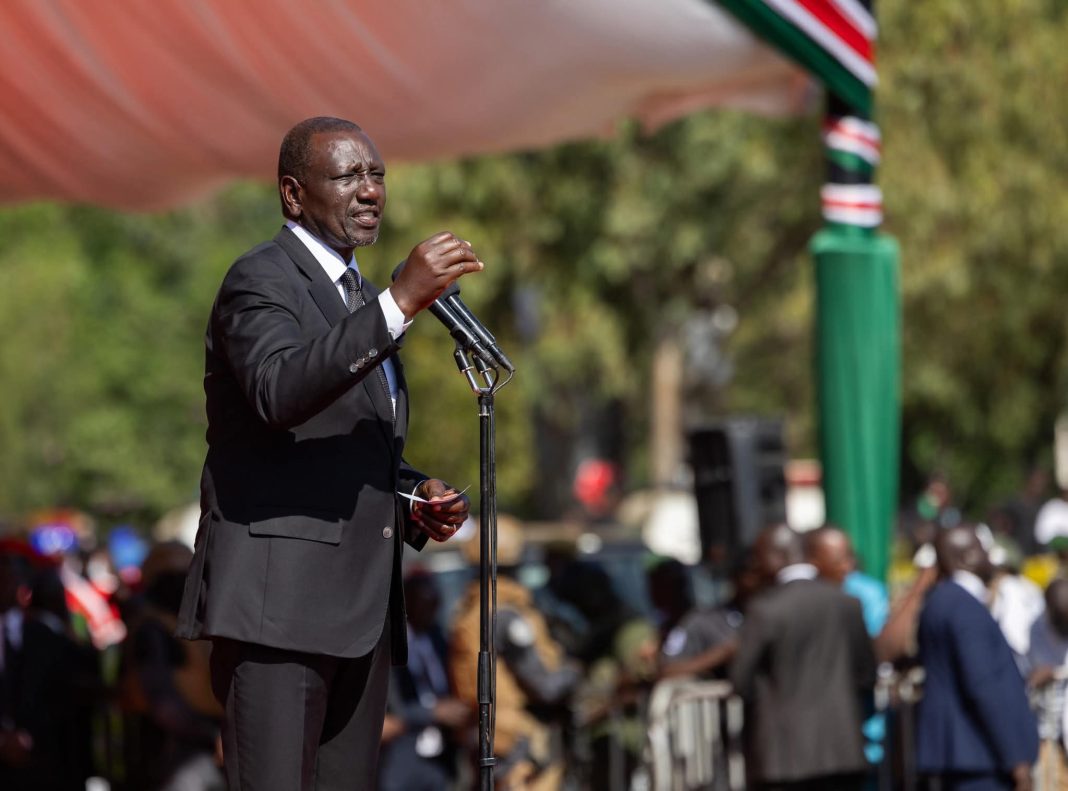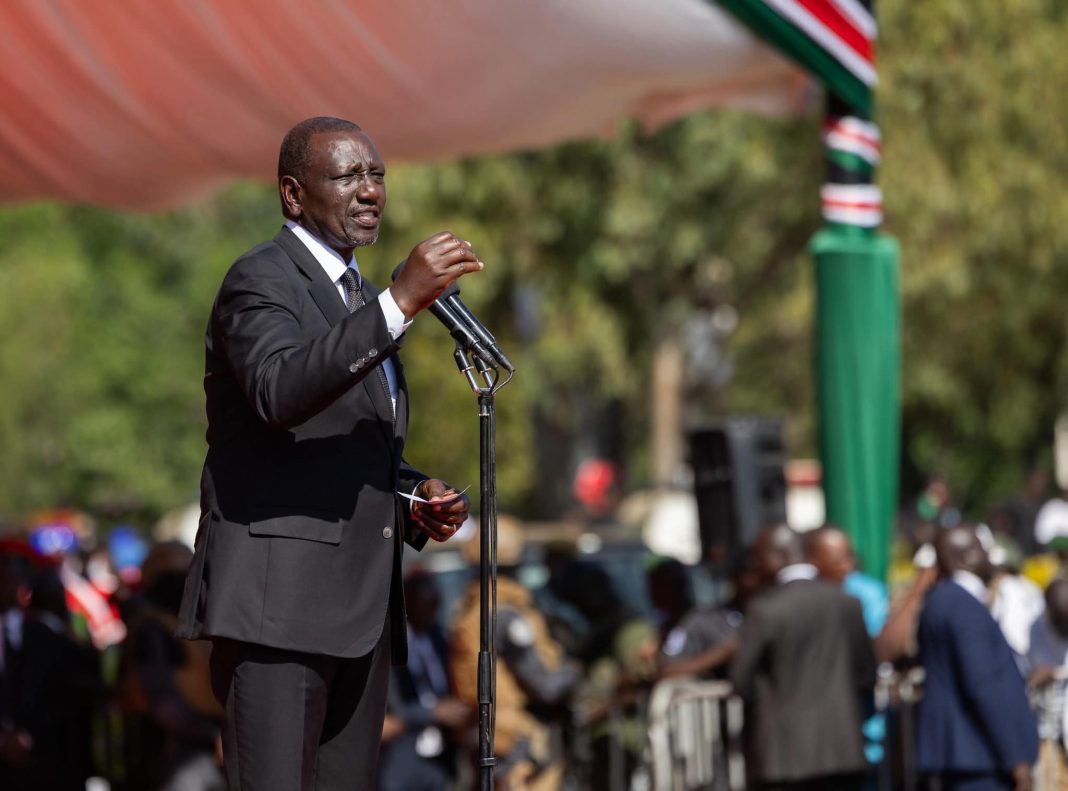By James Okoth
When President William Samoei Ruto stood at the podium in Bondo, before a sea of orange flags and tearful faces, he did something few in Kenya’s political history have dared. He abandoned his own party colours — and draped himself in those of his rival.
In a scene that blurred the lines between mourning and politics, Ruto invoked the ODM slogan, calling out “ODM!” to which mourners thundered back “Tuko Tayari!” The President smiled, not as a visiting dignitary, but as one of their own.
And as the chants rippled through the crowd, one thing became unmistakably clear: Ruto was not just paying homage to Raila Amolo Odinga, the man — he was courting the soul of ODM, the movement.
Throughout his lengthy and emotionally charged speech, Ruto made no mention — not once — of UDA, the party that carried him to State House. The conspicuous omission was not accidental. In politics, silence is often the loudest form of speech.
By deliberately keeping UDA out of his message, Ruto signalled something profound: a strategic widening of his political embrace beyond his traditional base. His language, tone, and symbolism in Bondo were not of a partisan president — but of a national reconciler, a man positioning himself as the legitimate heir to Raila’s broad reformist constituency.
“I was there when ODM was formed,” Ruto reminded mourners.
“I supported its vision. I believed in its dream for a better Kenya. And I still do.”
Those words drew thunderous applause. They were not just nostalgic — they were strategic.
Ruto’s evocation of ODM’s history and his early involvement in its formation reopened an old political chapter many had long closed: the Pentagon era, when ODM was a powerhouse coalition that united Kenya’s most charismatic regional leaders — Raila Odinga, William Ruto, Musalia Mudavadi, Najib Balala, and Joseph Nyagah.
That old unity was rooted in reform, inclusion, and shared struggle — ideals that Ruto cleverly resurrected in his speech. In doing so, he not only honoured Raila but also revived the nostalgia of the 2007 dream, a Kenya that almost redefined its politics before the storm of division set in.
Now, nearly two decades later, Ruto appears to be flirting with that memory — and with the idea of a reborn, rebranded political movement that transcends party lines. His emphasis on ODM’s legacy and reformist DNA hints at a deeper political chemistry: the possible amalgamation of ODM’s ideals and UDA’s structure into a new national vehicle.
Whether that becomes a merger, a coalition, or the rebirth of the Pentagon, only time — and strategy — will tell.
Ruto’s gesture in Bondo was far more than sentiment. It was political seduction at its most refined.
By chanting ODM’s slogan, Ruto didn’t just honour Raila — he symbolically entered the party’s emotional space. He spoke not to politicians, but to the Orange faithful, a constituency that has for years defined opposition politics in Kenya.
He appealed to their shared pain, invoked their collective pride, and subtly positioned himself as the custodian of Raila’s dream — a dream he now vows to complete.
In that moment, ODM ceased to be an opposition party in Ruto’s rhetoric. It became a moral partner in his administration’s larger vision — a vision he framed as national, not partisan.
Political observers saw the move as deliberate theatre, one designed to blur the boundary between Raila’s legacy and Ruto’s mandate — to make them indistinguishable in the minds of millions of Kenyans.
The question now is: was Ruto’s ODM moment a gesture of gratitude, or a glimpse into his 2027 strategy?
There are two plausible readings.
First, it could signal a permanent absorption of ODM into government — the completion of the slow political integration that began after the 2022 elections, when Raila and Ruto began privately collaborating on national development goals. Raila’s death may have accelerated that unification, leaving Ruto as the natural leader of a hybrid government–party structure.
Second, and more intriguing, it could point to Ruto’s preparation for a new, post-2027 political outfit — a revival of the Pentagon spirit under new colours, blending ODM’s reformist soul with UDA’s grassroots machinery. Such a formation would allow him to expand his coalition beyond Rift Valley and Central Kenya, absorbing Luo Nyanza and the Coast into his base.
If that happens, Ruto will not just have inherited Raila’s legacy — he will have re-engineered it into the foundation of his second-term political empire.
In Bondo, Ruto was not campaigning. He was consecrating. He was writing himself into the history of a movement that, for decades, defined the moral pulse of Kenya’s democracy.
By silencing UDA and amplifying ODM, Ruto presented himself not as a party man, but as a national reconciler and the living extension of Raila’s unfinished mission.
And perhaps that was the masterstroke — to let the orange colour drape over green and yellow, not as surrender, but as symbolism.
Because in politics, colours fade. But legacies endure.
And in Raila’s death, William Ruto may have found both — a legacy to complete, and a movement to inherit.




